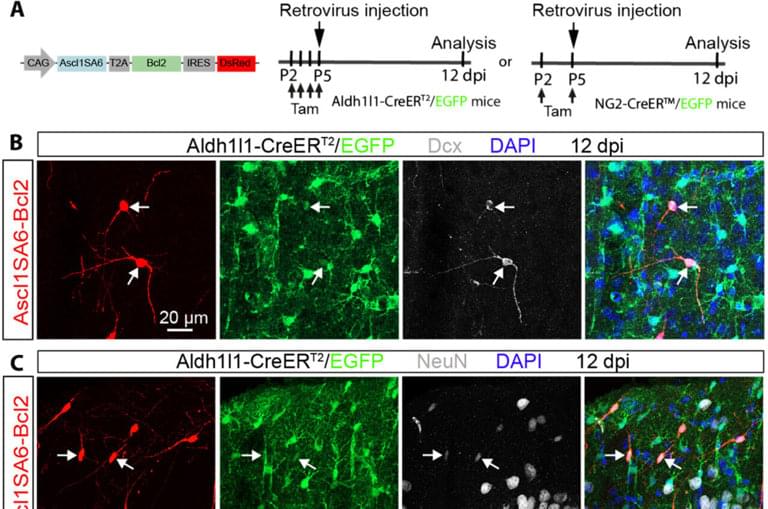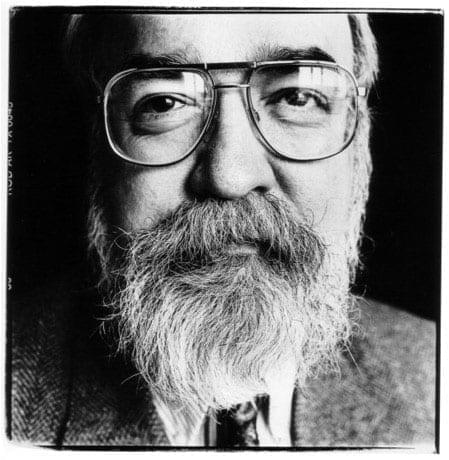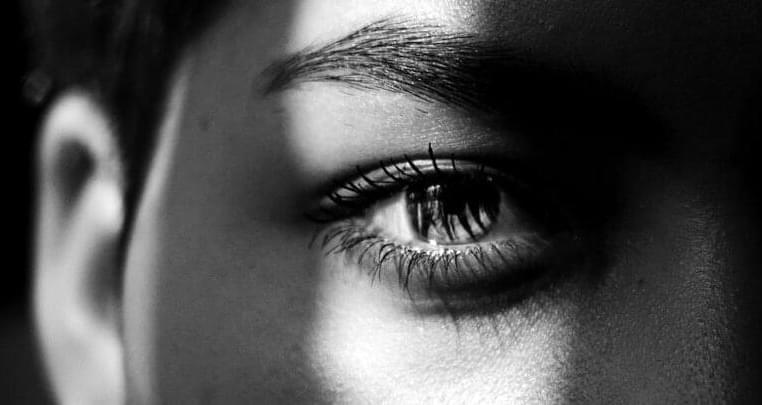Researchers have successfully demonstrated how astroglia—cells that support the functioning of the brain—can be reprogrammed into cells resembling interneurons.



Daniel C. Dennett is one of the most influential philosophers of our time, perhaps best known in cognitive science for his multiple drafts (or “fame in the brain”) model of human consciousness, and to the secular community for his 2006 book Breaking the Spell. Author and co-author of two-dozen books, he’s the Austin B. Fletcher Professor of Philosophy, and Co-Director of the Center for Cognitive Studies at Tufts University, where he taught our very own Point of Inquiry host Lindsay Beyerstein.
Beyerstein and Dennett catch up to discuss Dennett’s newest book, From Bacteria to Bach and Back: The Evolution of Minds. It’s a fresh look at Dennett’s earlier work on the subject of consciousness, taken in new directions as he seeks a “bottom-up view of creation.” Join Dennett and Beyerstein as they discuss the how’s and why’s of consciousness, not just from an evolutionary and neurological standpoint, but also through the lenses of computer science and human culture.
New POI episodes and updates sent right to you. It’s as easy as typing in your email. Your email isn’t shared with anyone else. Just news and updates.

Dr. Sanjeev Namjoshi, a machine learning engineer who recently submitted a book on Active Inference to MIT Press, discusses the theoretical foundations and practical applications of Active Inference, the Free Energy Principle (FEP), and Bayesian mechanics. He explains how these frameworks describe how biological and artificial systems maintain stability by minimizing uncertainty about their environment.
Namjoshi traces the evolution of these fields from early 2000s neuroscience research to current developments, highlighting how Active Inference provides a unified framework for perception and action through variational free energy minimization. He contrasts this with traditional machine learning approaches, emphasizing Active Inference’s natural capacity for exploration and curiosity through epistemic value.
The discussion covers key technical concepts like Markov blankets.
generative models, and the distinction between continuous and discrete implementations. Namjoshi explains how Active Inference moved from continuous state-space models (2003−2013) to discrete formulations (2015-present) to better handle planning problems.
He sees Active Inference as being at a similar stage to deep learning in the early 2000s — poised for significant breakthroughs but requiring better tools and wider adoption. While acknowledging current computational challenges, he emphasizes Active Inference’s potential advantages over reinforcement learning, particularly its principled approach to exploration and planning.
Namjoshi advocates for balanced oversight that enables innovation while maintaining appropriate safeguards. He expresses particular concern about the rapid pace of AI development potentially outpacing our understanding of risks and regulatory frameworks.
Dr. Sanjeev Namjoshi.
Billionaire entrepreneur Elon Musk said on Tuesday (October 29) that Neuralink, the company he co-founded, should look to develop a brain implant which would alleviate neck and back pain. Neuralink develops makes Brain-Computer Interfaces (BCIs) which can be implanted in human brain. Musk’s latest comment came in a post he made on X (formerly Twitter), the social media platform he owns.
I am increasingly convinced that @Neuralink should prioritize making an implant that can eliminate back & neck pain.
Would greatly improve people’s happiness while awake, as well as enhance quality of sleep.
Donate to Closer To Truth and help us keep our content free and without paywalls: https://shorturl.at/OnyRq.
What is information in biology? information is essential for analyzing data and testing hypotheses. But what is information in evolution, population genetics, levels of selection, and molecular genetics? Is computational biology transformational?
Follow Closer To Truth on Instagram for news, announcements, and exciting updates: https://shorturl.at/p2IhM
Terrence William Deacon is an American neuroanthropologist. He taught at Harvard for eight years, relocated to Boston University in 1992, and is currently Professor of Anthropology and member of the Cognitive Science Faculty at the University of California, Berkeley.
Get member exclusives like early access to new content with a free Closer To Truth account: https://closertotruth.com/
Closer To Truth, hosted by Robert Lawrence Kuhn and directed by Peter Getzels, presents the world’s greatest thinkers exploring humanity’s deepest questions. Discover fundamental issues of existence. Engage new and diverse ways of thinking. Appreciate intense debates. Share your own opinions. Seek your own answers.


In the middle of the night, the world can sometimes feel like a dark place. Under the cover of darkness, negative thoughts have a way of drifting through your mind, and as you lie awake, staring at the ceiling, you might start craving guilty pleasures, like a cigarette or a carb-heavy meal.
Plenty of evidence suggests the human mind functions differently if it is awake at nighttime. Past midnight, negative emotions tend to draw our attention more than positive ones, dangerous ideas grow in appeal and inhibitions fall away.
Some researchers think the human circadian rhythm is heavily involved in these critical changes in function, as they outline in a 2022 paper summarizing the evidence of how brain systems function differently after dark.
Here’s Malur Narayan of Latimer AI sharing about removing bias, and setting a standard for identifying and measuring it in artificial intelligence systems, and LLM’s.
Malur is a tech leader in AI / ML, mobile, quantum, and is an advocate of tech for good, and responsible AI.
Meet the rising stars,…
Malur Narayan is a tech leader in AI/ML, Mobile, Quantum and Tech for Good. He focuses on three different principals: Equity, Sustainability, and Mental Health. Malur is a board member, eternal optimist and a forever student.
Connect with Malur on LinkedIn: / malur.
